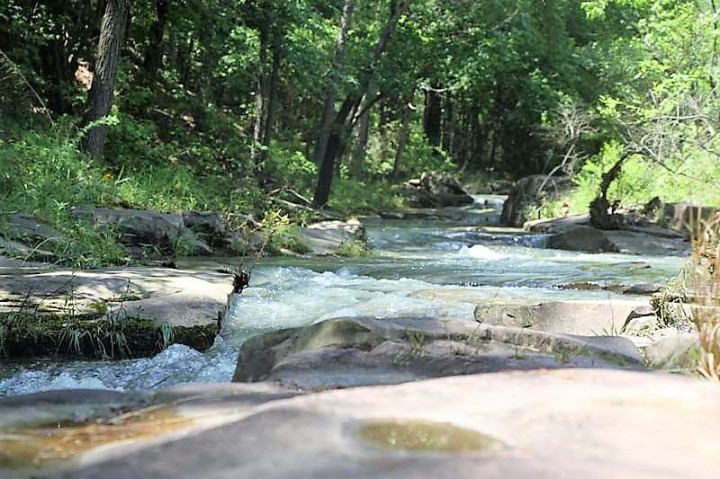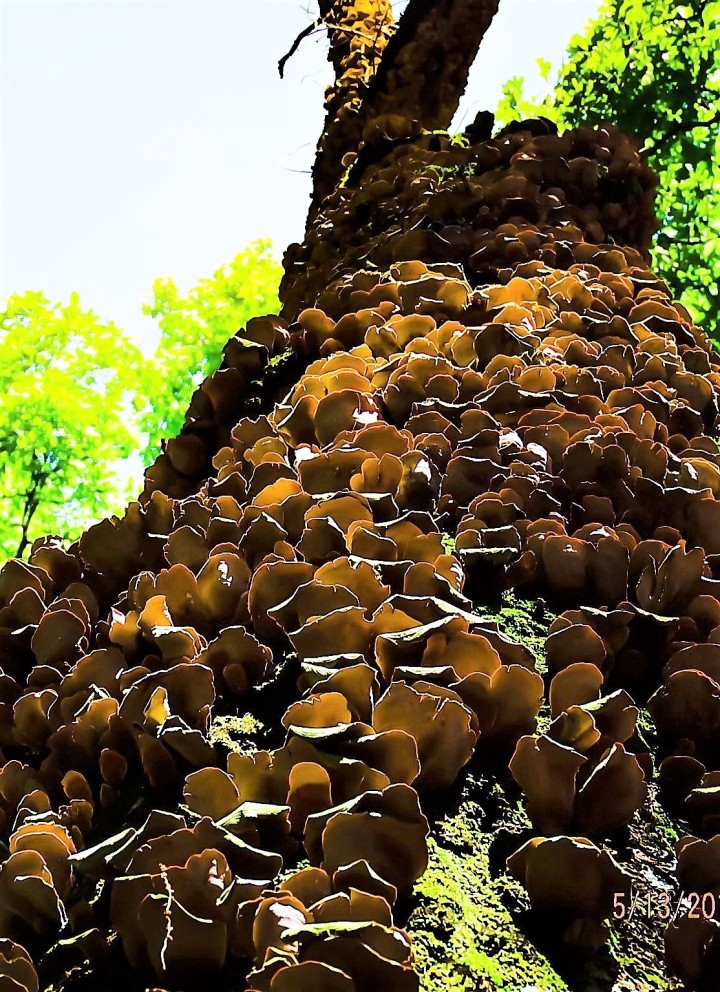We are excited to announce the winners of our May 13 Nature Photography Contest! Thank you to all of our talented, enthusiastic participants and to finalists Cliff Sheridan, Jeff Wittenburg, and Bob Verboon for your outstanding entries. Scroll down to enjoy!
Don Culwell led a walk on the trails at South Fork Nature Center on Saturday, May 13, where 17 folks came out to observe life in the woods and glades. Many of the group kept their cameras clicking as they recorded spiders on their webs, lichens and fungi close-up on tree bark, galls on oak leaves, and a myriad of other bits of the ecosystems they passed through. Enjoy all of their shots and let them lead you into a deeper understanding of the organisms, plant and animal, and their environment. The out-of-doors never ceases to be amazing!
-
“Branched (Fruticose) Lichen” by Cliff Sheridan

This is a Pioneer Plant that grows on thin, rocky soil. The fungal threads making up the lichen have a symbiotic relationship with the microscopic algal cells living among them. -
“Surface Algae Cells on Bracket Fungus with Moss” by Jeff Wittenburg

Life on a log. Green algal cells are on the surface of a species of bracket fungus, the fungus having grown from the hyphal threads of the fungi decomposing the log. Brackets are producing spores as a part of the fungus reproduction cycle; all of this is happening on the dead log on which leafy, green mosses thrive rooted among the fungi. -
“The Hungry Caterpillar” by Jeff Wittenburg

This hairy caterpillar, in moth larval stage, is lunching on an oak leaf and may in turn be lunch for some bird that will sing in the woods as it searches for a mate. -
“Colorful Spider Spinning its Web” by Jeff Wittenburg

The spider in this picture, spinning its web, is not an “insect”. It has eight legs and belongs to the class Arachnida. Insects have six legs and belong to the class Insecta. Visitors interested in the study of Arachnology (spiders) and Entomology (insects) will have many different species to observe while walking our trails. -
“Grape Holly Berries (Invasive)” by Jeff Wittenburg

The Grape Holly Bush is an invasive plant found growing at South Fork Nature Center. Part of our mission at the Nature Center is to control or eliminate invasive species so that the native plants can thrive and not be overgrown. -
“Aquatic Habitat” by Bob Verboon

This picture was taken alongside the Creek Glade. The little pools of water created along the sides of the creek create small habitats for some of the Nature Center’s smallest residents. -
“Box Turtle” by Cliff Sheridan

This box turtle was observed sunning itself. It can be classified as an omnivore (it eats both plants and animals). It is an integral part of the native population and food web present as South Fork Nature Center. If you observe one while walking the trails, please leave it in its natural habitat. -
“Bracket Fungus on Tree” by Cliff Sheridan

The bracket fungus pictured here is decomposing the wood of the tree. It is a saprophyte which means that it derives nourishment from dead or decaying organic matter. -
“Fire Pink Flower” by Cliff Sheridan

The flower is named “pink” not from its color, but because the edges of its petals are “pinked’ or notched. It is in the carnation family. It is one of the 580+ species of plants inventories at South Fork and present in our herbarium located in the Gates Rogers office in downtown Clinton. -
“Small Scaled Lizard” by Bob Verboon

This lizard is only visible because it is located on a green background. The natural camouflage of its scaled skin affords it protection from predators. Visitors can observe examples of nature’s “camouflage” on many of the species present in the natural habitats which make up the Nature Center.
You must be logged in to post a comment.